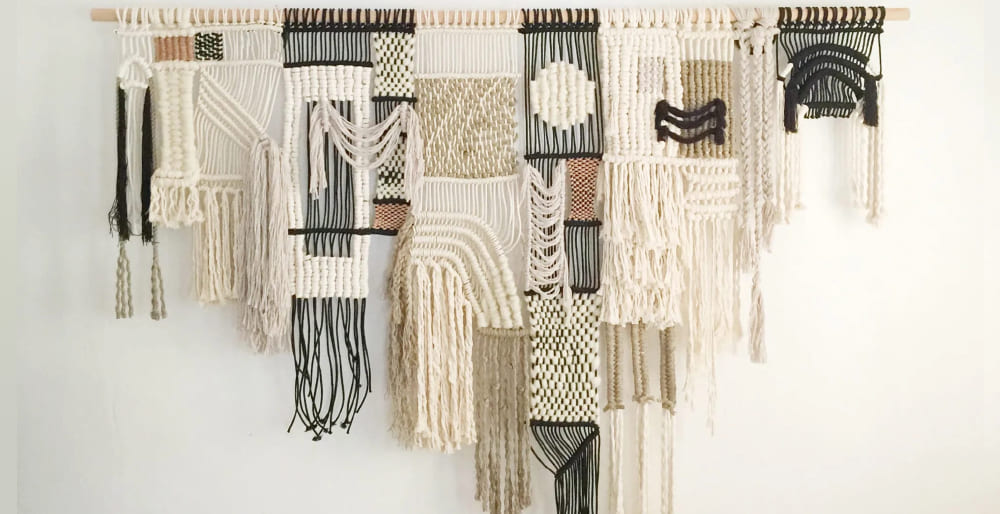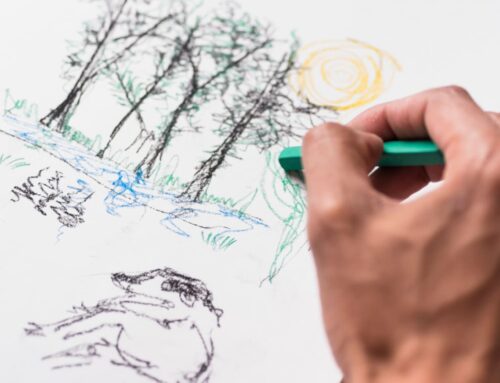Macrame is one of the oldest weaving arts, it is type of Handmade which appeared in the thirteenth century by Arab weavers, and then popularized in Spain and Italy, and then spread to Europe and was known in England in the seventeenth century.
macrame or Knotting: is one of many crafts being revived by those who love working with their hands. Just like surface embroidery, quilting, and needlework are seeing a bump in popularity, macramé is being transformed from a 1970s relic into a hot, trendy art form.
when you learn this hobby you can make beautiful things like curtains, mirrors, bags, wall hangs, table cloth, carpet, and decorative product
Definition of macrame:
The art of macrame is the art of knitting strings and ropes in an artistic way that gives it an aesthetic appearance Macrame uses in curtains, bags, necklaces and many more, and it is an easy and fun craft and its materials are available so all we need.
Material of macrame that depend on the idea and the design what you do . In the past Man has created an endless series of knots that are useful for all purposes.
The most important of which are tying, fastening, hanging, and knots, and they vary into many forms, and sailors used them in making fishing nets.
Knots were also used as splints for fractures and knots were used in ropes to help them in knowing the calculations.
what is the material of macrame?
Materials used in macramé include cords made of cotton twine, linen, hemp, jute, leather or yarn. Cords are identified by construction, such as a 3-ply cord, made of three lengths of fiber twisted together. Jewelry is often made in combination of both the knots and various beads (of glass, wood, and so on), pendants or shells.
For larger decorative pieces, such as wall hangings or window coverings, a work of macramé might be started out on a wooden or metal dowel, allowing for a spread of dozens of cords that are easy to manipulate.
For smaller projects, push-pin boards are available specifically for macramé, although a simple corkboard works adequately. Many craft stores offer beginners’ kits, work boards, beads and materials ranging in price for the casual hobbyist or ambitious craftsperson.
What is the things require for choosing macrame cord?
1. Composition:
The material from which the macrame cord was made is very important. Fibers, such as hemp and jute, used to be very popular with macrame artists.
However, their availability in the market influenced the rise in popularity of macrame cords made from nylon and satin rayon, which are man-made fibers. I suggest as a beginner, you should use nylon because they are easy to unravel in case you make a mistake in knotting.
2. Strength:
The strength of a macrame cord depends largely on its composition. A cord made from jute, leather, ribbon and nylon is quite strong.
3. Twist:
The strength of the cord is determined by whether the individual strands of the material were twisted or braided in the manufacturing process. A braided macrame cord unravels less easily than a twisted cord.
Before beginning a macrame project always treat the ends of a cord to prevent the stands from separating. You can dip the ends in melted clear wax.
If you want to create a fringe, make sure the strands do not unravel further than the fringe’s length by knotting the top of the fringe.
4. Stiffness:
A cord should be flexible enough to bend and curve according to the pattern’s requirements. If you are making a bracelet or necklace, a thinner macrame cord is recommended. For example, an embroidery cord made of cotton is soft and very flexible. You can also use leather, but make sure it is less than 2 mm in width.
5. Texture:
There are macrame cords that feel rough and may be irritating to the skin. Hemp and metallic cords are not recommended for making necklaces and bracelets. Nylon, silk, satin rayon and cotton were the suggested materials to use. You can also use leather because it softens after a period of use.
6. Diameter or Width:
The thickness of the macrame cord is usually indicated in millimeters (mm). When buying a cord, keep in mind the question of whether they can be inserted into beads, buttons or other decorations.
Cords that are more than 4.0 mm in diameter may need larger decorations. A good-sized cord for making micro-macrame projects, such as bracelets and necklaces, should have less than 2.0 mm diameter.
7. Amount or Quantity:
The amount of the cord refers to the length of cord needed for the entire project. Some cords come in large rolls, while others come in shorter lengths.





